On our list of ‘things to do’ while stationed in the DC area was making it out to Luray Caverns. Since we needed to do a shakedown run with the Expedition pulling the trailer, and needed a refresher on what exactly we need to bring with us in the trailer (before we PCS), this weekend presented a good opportunity to knock all of those things out. Also, the weather was supposed to be decent, and new moon was on Friday, so the timing was good. Given the percentage of chances for thunderstorms, I didn’t haul the big scope out, but instead thought I’d try to get some better Milky Way shots with the extremely wide 14mm Rokinon.
For reference, the featured image for this post is the most up-to-date light pollution data available for CONUS. Based on (a zoomed in version of) this map, the sky here at the house is about 15x as bright from light pollution as the sky out in Shenandoah National Park, where I went star-hunting. What does that look like? First, we’ll look at a single, unedited exposure from South of the airfield on Quantico:
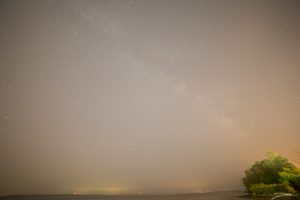
Second, an identical exposure (Canon 6D, Rokinon 14mm f/2.8 @ f/2.8, ISO 6400, 25-seconds), only taken in Shenandoah National Park:
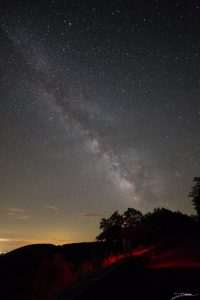
Here’s an unedited 15-second exposure from Shenandoah:
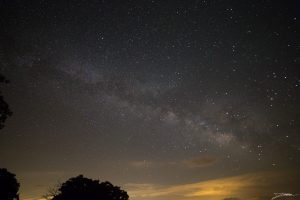
Here’s five 15-second exposures stacked to reduce noise, after levels editing:
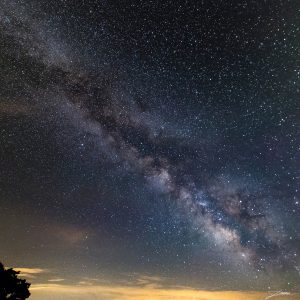
Starting to get the picture? I did a 4-part shot a while back noting how badly light pollution sucks, where the ‘good’ location was still a couple times brighter than Shenandoah. Granted, another hour+ West into West Virginia and you can be in some of the darkest skies anywhere near the Eastern seaboard. But we were staying in Luray, so Shenandoah it was.
The Rokinon is a pretty good astro lens, though it does have its quirks. It focuses at infinity at two different points on the scale, depending on whether you’re racking it from the near stop toward infinity, or from the ‘past infinity’ stop back toward near focus. This likely indicates some looseness in the focus mechanism gearing, but the bottom line is that I can achieve infinity focus, which is what’s important. It’s also very, very wide. How wide? Note the area of the Milky Way pictured above, and compare it to the following. This shot is a 69-megapixel composite of a dozen images taken with my Canon 50mm f/1.4 (at f/2.8, more on that below), while the image above is an 11-megapixel crop of the 20MP 6D sensor. The stitched-together photo does have more fine detail, but the effort involved in getting ‘wide’ shots is much more significant:
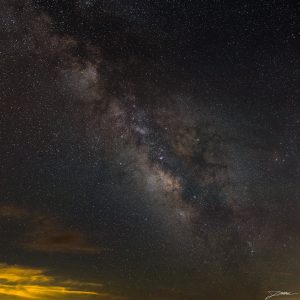
Why was it taken at f/2.8? Because of a nasty optical abberation called coma. Here’s a single sub-frame from the above, at f/2.8:
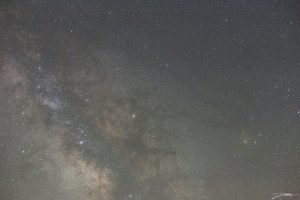
Here’s the same basic framing, only with the lens set to f/2.0:
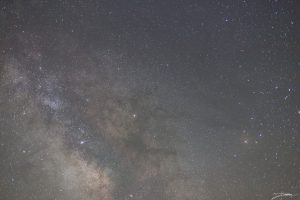
Now, wide-open at f/1.4 (2 stops faster than the 1st pic):
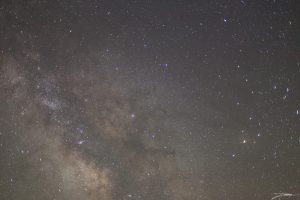
Note the stars on the right-hand side of the frame getting worse and worse. While in a single image this is bad, trying to stack these bat-wing-shaped stars across multiple images pretty much breaks any automatic alignment algorithm, in addition to looking terrible.
Of course, one still has the option to stitch multiple ultra-wides together. Which (after much attention to the warp transformation to get the horizon sorted out) brings us to a full Milky Way shot:
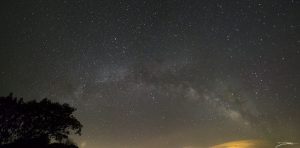
A bit later, after I had relocated from Pinnacles overlook to a pull-off just North of Hazel Mountain overlook, the Milky Way was higher in the sky. I had also pushed my individual exposures from the 15-second ones used to create the above, to 25-second shots:
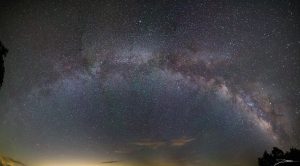
This spot is also where I took the second shot in this post, which after a little editing, looks like this:
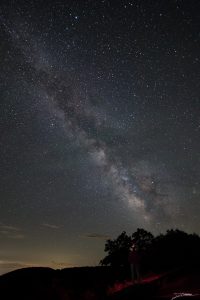
Not too shabby for stumbling around in the dark…

Leave a Reply